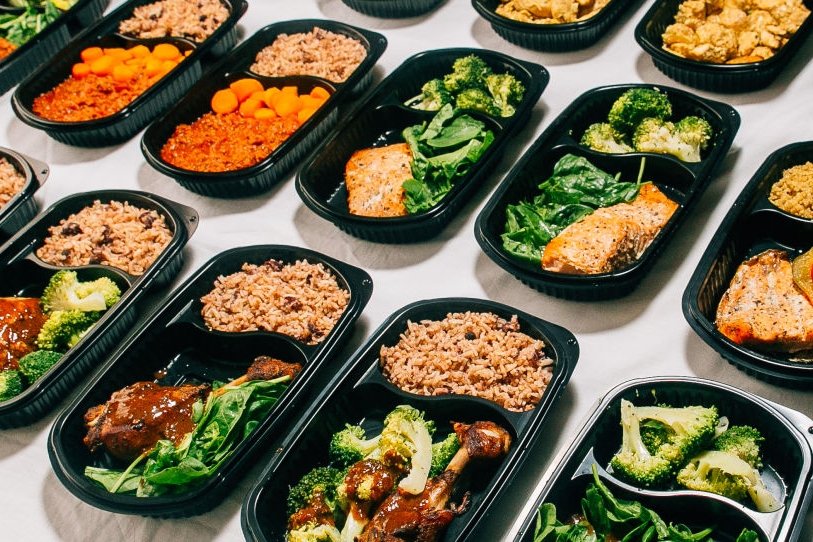
The Carb Cycling Diet: A Guide for Men
Carb cycling is a dietary approach that involves strategically varying your carbohydrate intake on a daily or weekly basis. This method has gained popularity among men seeking to optimize their fitness goals, whether it’s shedding body fat, building lean muscle, or enhancing athletic performance.
Understanding Carb Cycling
The core principle behind carb cycling revolves around manipulating your body’s insulin response. Insulin is a hormone that plays a crucial role in carbohydrate metabolism, fat storage, and muscle growth. By strategically adjusting your carb intake, you can influence how your body utilizes energy and achieves its fitness goals.
Benefits for Men
- Fat Loss: Carb cycling can help promote fat loss by creating a calorie deficit on low-carb days, while still providing the necessary fuel for workouts on high-carb days.
- Muscle Growth: High-carb days provide the necessary energy and insulin spike to support muscle protein synthesis and growth, especially when combined with resistance training.
- Improved Insulin Sensitivity: By alternating between high and low carb intake, you can improve your body’s sensitivity to insulin, which is essential for managing blood sugar levels and overall health.
- Enhanced Athletic Performance: Carb cycling can help optimize energy levels and glycogen stores for workouts, leading to improved endurance, strength, and power output.
How to Implement Carb Cycling
There are various ways to implement carb cycling, but the most common approach involves alternating between high-carb, moderate-carb, and low-carb days. The specific number of days for each level depends on your individual goals, activity levels, and preferences.
Here’s a general guideline for setting up your carb cycling plan:
- High-Carb Days: These days typically coincide with your most intense workout sessions. Consume a higher amount of carbohydrates to fuel your performance and replenish glycogen stores.
- Moderate-Carb Days: These days may fall on moderate-intensity workout days or active rest days. Your carb intake will be moderate, providing sustained energy without excessive insulin spikes.
- Low-Carb Days: These days usually align with your rest days or light-intensity activity. Limit your carbohydrate intake to promote fat burning and improve insulin sensitivity.
Macronutrient Ratios
While carb cycling focuses on varying your carbohydrate intake, it’s essential to maintain a balanced macronutrient ratio across all days. Here’s a general guideline:
- Protein: Maintain a consistent protein intake of 1-1.5 grams per pound of body weight to support muscle growth and repair.
- Fats: Adjust your fat intake inversely to your carbohydrate intake. On low-carb days, increase healthy fats to maintain calorie balance and support hormone production.
Choosing the Right Carbohydrates
The quality of your carbohydrates is just as important as the quantity. Prioritize complex carbohydrates over simple carbohydrates to ensure sustained energy levels and optimal health. Here are some excellent sources of complex carbohydrates:
- Whole Grains: Brown rice, quinoa, oats, whole-wheat bread
- Fruits: Berries, bananas, apples, oranges
- Vegetables: Broccoli, spinach, carrots, sweet potatoes
- Legumes: Beans, lentils, chickpeas
Sample Carb Cycling Meal Plan
High-Carb Day:
- Breakfast: Oatmeal with berries and nuts
- Lunch: Brown rice with grilled chicken and mixed vegetables
- Dinner: Whole-wheat pasta with marinara sauce and lean ground beef
- Snacks: Fruit, Greek yogurt, trail mix
Moderate-Carb Day:
- Breakfast: Scrambled eggs with whole-wheat toast
- Lunch: Salad with grilled salmon and quinoa
- Dinner: Chicken breast with sweet potato and steamed vegetables
- Snacks: Nuts, cottage cheese, hard-boiled eggs
Low-Carb Day:
- Breakfast: Omelet with vegetables and avocado
- Lunch: Salad with tuna and mixed greens
- Dinner: Steak with roasted vegetables
- Snacks: Cheese sticks, almonds, protein shake
Tips for Success
- Start Gradually: Don’t drastically change your carb intake overnight. Ease into carb cycling to allow your body to adjust.
- Track Your Progress: Monitor your energy levels, workout performance, and body composition to assess the effectiveness of your carb cycling plan.
- Stay Hydrated: Drink plenty of water throughout the day, especially on low-carb days, as your body may lose water due to decreased glycogen storage.
- Adjust Based on Feedback: Pay attention to how your body responds to different carb levels and adjust your plan accordingly.
- Consistency is Key: Stick to your carb cycling plan consistently to reap the full benefits.
Conclusion
Carb cycling can be a powerful tool for men seeking to optimize their fitness and health. By strategically manipulating your carbohydrate intake, you can enhance fat loss, build lean muscle, and improve athletic performance. Remember to focus on choosing high-quality carbohydrates, maintaining a balanced macronutrient ratio, and staying consistent with your plan to achieve the best results.


